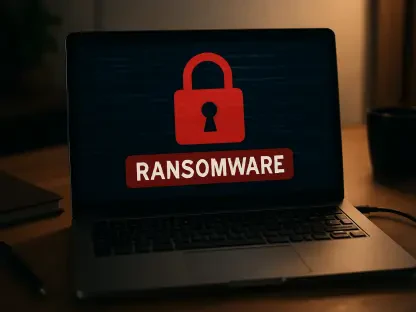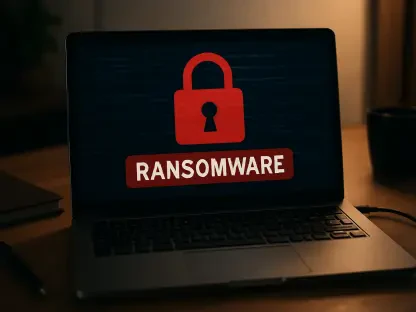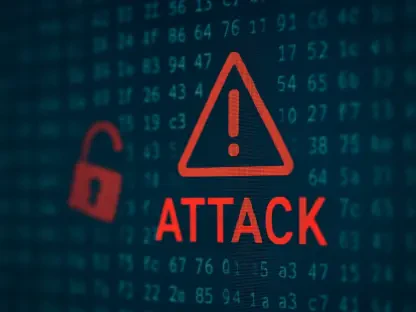In a digital landscape where cyber threats evolve at an alarming pace, a recent discovery of critical zero-day exploits targeting Cisco’s Secure Firewall software has sent shockwaves through the cybersecurity community, highlighting the urgent need for immediate action. These vulnerabilities, affecting both the Adaptive Security Appliance (ASA) and Threat Defense (FTD) platforms, have been actively exploited by unknown threat actors in highly targeted attacks. The severity of the situation cannot be overstated, as these flaws enable unauthenticated remote code execution (RCE), potentially allowing attackers to take full control of affected devices. With network security forming the backbone of organizational defenses, such exploits pose a dire risk to sensitive data and infrastructure. The urgency to address these issues is paramount, as delays in patching could lead to catastrophic breaches. This discussion delves into the nature of these vulnerabilities, their impact, and the immediate steps required to mitigate the threat.
Understanding the Vulnerabilities
Unpacking the Exploit Chain Mechanics
The core of this security crisis lies in a sophisticated exploit chain targeting Cisco’s firewall software, specifically through the clientless VPN (WebVPN) feature. Identified as CVE-2025-20362 and CVE-2025-20333, these vulnerabilities work in tandem to bypass authentication and execute malicious code. The initial stage involves an authentication bypass flaw, stemming from a path traversal issue that lets attackers access restricted URL endpoints without credentials. By crafting a specific HTTP request, threat actors exploit this gap, gaining unauthorized entry into the system. This vulnerability, while intricate, sets the stage for deeper infiltration. Its connection to a previously known issue highlights the persistent challenges in securing complex software. The active exploitation of this flaw in real-world scenarios underscores the need for heightened vigilance among administrators managing these critical systems, as the consequences of inaction could compromise entire networks.
Beyond the initial breach, the second vulnerability, a buffer overflow in the WebVPN file upload process, amplifies the danger. This flaw, caused by inadequate validation of input size in a Lua script, leads to memory corruption, ultimately granting attackers full control over the device through unauthenticated RCE. The technical complexity of this exploit should not be underestimated, as it requires precise manipulation to trigger system crashes and reboots. However, its confirmed use in targeted attacks reveals the determination of threat actors to exploit even the most challenging vulnerabilities. The combined effect of these two flaws creates a pathway for devastating outcomes, including the potential to disable firewall protections entirely. Organizations relying on these Cisco systems must recognize the gravity of this exploit chain, as it directly threatens the integrity of their security posture and demands immediate attention to prevent further damage.
Scope and Affected Systems
The scope of these zero-day exploits extends across a wide range of Cisco firewall deployments, specifically targeting ASA and FTD software when the WebVPN portal is enabled. This configuration, common in many enterprise environments for remote access, inadvertently exposes systems to risk. The active exploitation of these flaws in highly targeted attacks suggests that threat actors are selectively choosing high-value targets, potentially in critical industries. A third vulnerability, CVE-2025-20363, was also addressed in recent patches, though it is not believed to be part of the current exploit chain. This additional fix reflects Cisco’s broader effort to secure its platforms against evolving threats. The widespread use of these firewall solutions in protecting network perimeters makes the impact of such vulnerabilities particularly alarming, as they could serve as entry points for broader cyberattacks affecting countless users and systems.
Moreover, the risk is not confined to a single type of deployment but affects various versions of the software, necessitating a thorough review of configurations across organizations. Cisco has released updated versions, such as ASAv 9.16.4.85, to mitigate these risks, but the responsibility falls on administrators to apply these patches promptly. Delaying updates could leave systems vulnerable to attackers who are already exploiting these flaws with precision. The potential for complete device compromise, including manipulation of firewall rules or data exfiltration, elevates the urgency of addressing this issue. As these exploits target a critical component of network security, the ripple effects of a breach could disrupt operations on a massive scale, making it imperative for organizations to assess their exposure and act without hesitation to safeguard their infrastructure.
Mitigation and Response Strategies
Immediate Actions for Administrators
Responding to these zero-day exploits requires swift and decisive action from system administrators overseeing Cisco firewall deployments. The first step involves applying the patches released by Cisco to address the identified vulnerabilities. These updates close the loopholes exploited by the authentication bypass and buffer overflow flaws, effectively blocking the pathways used by attackers. Beyond patching, disabling the WebVPN feature temporarily on affected systems can serve as an interim measure to reduce exposure, especially if immediate updates are not feasible. Conducting a thorough audit of network logs for signs of unauthorized access or unusual activity is also critical, as early detection of compromise can limit damage. The active nature of these exploits in targeted attacks means that hesitation could result in severe consequences, making rapid response a top priority for maintaining security.
Additionally, administrators should ensure that all team members are informed about the severity of these vulnerabilities and the steps being taken to mitigate them. Communication with stakeholders, including management and end-users, can help manage expectations and reinforce the importance of security protocols during this period of heightened risk. Implementing enhanced monitoring tools to detect anomalies in real-time can further bolster defenses against potential exploits that may have already occurred. Given the sophistication of the threat actors behind these attacks, staying proactive with security updates and patches beyond the current crisis is essential. The focus must remain on preventing future vulnerabilities by adopting a comprehensive approach to system hardening, ensuring that similar flaws are identified and addressed before they can be exploited by malicious entities in the digital landscape.
Long-Term Security Considerations
Looking beyond the immediate crisis, organizations must adopt a forward-thinking approach to prevent the recurrence of such critical exploits. Regularly updating software and firmware is a fundamental practice that cannot be overlooked, as it ensures systems remain protected against newly discovered threats. Conducting periodic security assessments and penetration testing can help identify potential weaknesses before they are exploited, providing an additional layer of defense. Training staff on recognizing phishing attempts and other social engineering tactics that often precede technical exploits is equally important, as human error can serve as an entry point for attackers. The lessons learned from this incident highlight the need for a robust cybersecurity framework that evolves alongside emerging threats, safeguarding critical infrastructure over the long term.
Furthermore, collaboration with industry peers and cybersecurity experts can offer valuable insights into best practices for securing firewall systems. Sharing information about threats and mitigation strategies fosters a collective defense against sophisticated attacks that target widely used technologies. Investing in advanced threat detection and response solutions can also enhance an organization’s ability to identify and neutralize exploits in their early stages. Reflecting on the active exploitation of these Cisco vulnerabilities, it becomes clear that a proactive stance on security is non-negotiable. The path forward involves not just addressing the current flaws but building resilience against future zero-day threats, ensuring that network defenses remain steadfast in an era of relentless cyber challenges.









